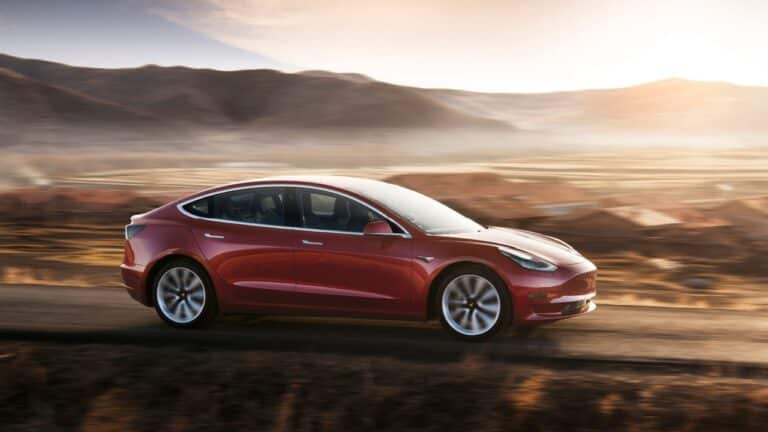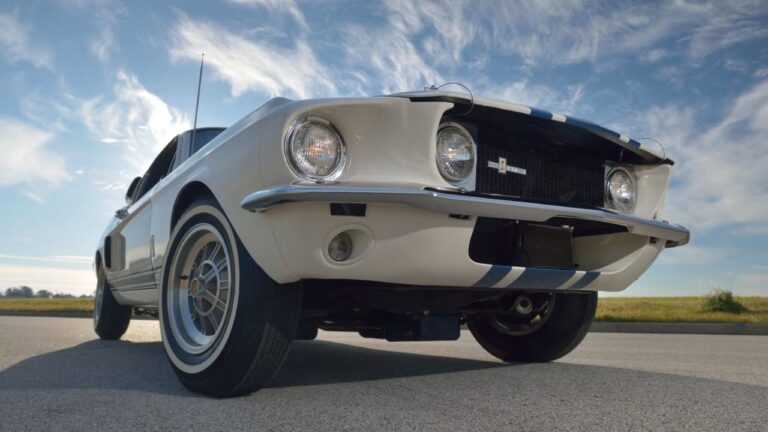13 Underrated Supercars That Deserve More Attention

Why are some supercars underrated? Is it that they don’t look “super” enough? We immediately identify supercars from a picture without having actually heard or seen them move. They have a certain look that makes them instantly recognizable before you’ve even heard the roar of the engine or the silence of the electric powertrain.
What you see in those pictures are low-slung sports cars with aerodynamic lines and curves that hint at agility and speed. They’re exotics, usually street-legal, and boast superlative performance beyond the threshold of regular sports cars.
They didn’t always look this way, though. In the ’60s, for example, muscle cars were “supercars” because of what they could do – because they were many cuts above the potential of regular cars. The “S/C in AMC S/C Rambler muscle car is actually short for “SuperCar (Super Stock Rambler).
Folks saw pictures of boxy cars with distinctive long, sweeping hoods, ending with large grilles, and relatively short decks and thought, “That’s a supercar.” That tells us what defines a supercar is less about the looks (which can change tomorrow) and more about performance, in which case, the 13 on this list deserve more respect.
Noble M600

The British-made Noble M600 may not look as stunning as the McLaren 720S or as aggressive as the Lamborghini Huracan but no less a supercar with a fistful of performance and driver engagement. Under the Porsche-like hood lay a Yamaha-derived 4.4-liter twin-turbocharged V8 engine reworked to deliver up to 650 horsepower and 604 lb-ft of torque.
Ultimately, the M600 can accelerate from 0 to 60 mph in around 3 seconds and achieve a top speed of approximately 225 mph. It emphasizes a pure driving experience as much as raw power.
The minimal electronic aids do not distract from what matters, and a 6-speed manual shifter amplifies the connection between driver and machine. Perhaps, the M600 is underrated because it cares more about driver engagement than complex ADAS and stability control systems.
KTM X-Bow

The Austrian-made X-Bow is an ultra-lightweight, track-focused performance car that deserves to be seen as more than just an open-top track toy. Thankfully, the automaker is finally correcting this assumption with models like the GTX and GT-XR, featuring a more “supercar-like” design.
As a highly specialized track car, the X-Bow offers an experience similar to a race car, which explains the minimalist design emphasizing performance and driving dynamics over comfort and luxury.
It used a carbon fiber chassis, resulting in an exceptionally low weight of around 1,700 pounds. You may never see it on a list of the most powerful supercars, but the X-Bow can race to 60 mph in less than 4 seconds, thanks to a combination of lightweight construction and robust powertrain.
Zenvo ST1

It may not be as famous as the Ferraris and Bugattis, but gearheads know and respect this Danish supercar with extreme performance capabilities. Its motivation comes from a 6.8-liter V8 engine that comes supercharged and turbocharged, resulting in an astounding 1,104 horsepower and 1,054 lb-ft of torque.
It sends the ST1 from rest to 60 mph in 3 seconds, achieving a top speed of 233 mph. The world is not entirely to blame for the ST1’s relative obscurity since it is handcrafted in Denmark and in small quantities to ensure its exclusivity.
Donkervoort D8 GTO

The Donkervoort D8 GTO is a Dutch supercar with a narrowed focus on driving purity and agility. It is built exceptionally lightweight (around 1,543 lbs) thanks to an extensive use of carbon fiber and other lightweight materials.
The emphasis on agility explains the incredibly high power-to-weight ratio of less than 2, ranking it among the world’s fastest road-legal cars. The D8 GTO relies on an Audi-derived 2.5-liter five-cylinder turbocharged engine producing up to 415 horsepower and sending it from 0 to 60 mph in 2.7 seconds.
Donkervoort specializes in track-oriented cars for purists, with minimal gizmos, a manual transmission, and a direct, responsive steering setup.
Wiesmann GT MF5

Don’t let the retro styling fool you. The German-made Wiesmann GT MF5 is a handcrafted stunner that also happens to have a BMW-sourced 4.4-liter twin-turbocharged V8 engine producing 555 horsepower and 501 lb-ft of torque.
The car is almost too elegant for its performance capabilities, like watching the lady of the castle scoop her dainty gown and race to 60 mph in 3.9 seconds and a top speed of 193 mph. That’s a fine line between sports car and supercar territory, but we’re inclined to stop over to the ‘supercar’ land because the MF5 is just too gorgeous to remain in the sports car yard.
Mazzanti Evantra

And here comes our first Italian pick: The bespoke Mazzanti Evantra, built to owner specifications via a wide range of customization options, from interior materials and finishes to exterior colors and trims. The result is that no two Evantras are exactly the same unless a customer makes that happen.
They go to their owners weighing around 2,866 lbs and prepped with a 7.0-liter V8 engine cranking out up to 751 horsepower and 634 lb-ft of torque. It can sprint from rest to 60 mph in just 3 seconds, with a top speed exceeding 225 mph.
Arrinera Hussarya

Hussarya may be far less known than Lamborghini’s Huayra, but this Polish supercar is just as capable. It is Poland’s first supercar, featuring a GM-sourced 6.2-liter V8 engine producing up to 650 horsepower and 605 lb-ft of torque. Thus, the Hussarya can wake from 0 to 60 mph in a breezy 3.2 seconds, reaching a top speed of approximately 211 mph.
It rides on a steel spaceframe chassis clothed with carbon fiber body panels. It has an even more powerful track-focused version called the Hussarya GT, equipped with a 6.2-liter free-breathing LS7 V8 engine mated to a 6-speed manual transmission. The GT boasts a top speed of 312.4 mph.
Tramontana XTR

The Transmontana XTR is a Spanish open-wheel supercar flaunting an aviation-inspired design and a mid-mounted twin-turbocharged V8 and V12 powerplants producing 500 to 900 horsepower.
The XTR’s fighter jet profile (ergo, the centrally positioned cockpit) is more than skin deep. At the risk of looking like a track-day toy, Transmontana went ahead with an open-wheel configuration to mirror the design of F1 or Le Mans hypercars to optimize the car’s aero and handling dynamics.
The XTR is basically carbon fiber, as you’d expect in aerospace and motorsport applications, resulting in a lightweight yet rigid build.
Gumpert Apollo

The German-made Gumpert Apollo deserves more attention from enthusiast communities besides the geeks and gearheads familiar with its track-oriented performance. The Apollo is a remarkable supercar designed by former Audi Sport director Rolland Gumpert, which explains the Audi heart and race-car-like performance and handling.
Its motivation comes from an Audi-sourced twin-turbocharged 4.2-liter V8 engine producing 650 to 800 horsepower.
Weighing approximately 2,645 lbs thanks to the lightweight carbon fiber monocoque chassis and body, the Apollo can dash to 60 mph in 3.0 seconds, reaching a top speed of around 224 mph. It has proven its mettle with impressive lap times at the Nürburgring Nordschleife race track.
Spyker C8 Preliator

The Dutch-made Spyker C8 Preliator is a hugely underrated supercar, considering its impressive combination of unique design, luxurious craftsmanship, and exceptional performance. Unlike the Wiesmann GT MF5 that looks flat-out retro, the Preliator meticulously combines modern aesthetics with classic sports car elements in such a way that either the observer is a purist who can tell at first sight or you’re a regular aficionado who has to look harder to spot the difference.
The Preliator’s design is also inspired by the aviation world, exemplified by the propeller motifs, turbine-style air intakes, and an aircraft-inspired dashboard. Besides the exquisite craftsmanship, it can race to 60 mph in 3.7 seconds, propelled by an Audi-sourced 4.2-liter V8 producing 525 horsepower and 443 lb-ft of torque.
Vencer Sarthe

The Vencer Sarthe is another underappreciated Dutch supercar boasting a winning blend of craftsmanship and performance. It is a fine specimen of Dutch engineering, handcrafted in the Netherlands and produced in small quantities.
It can reach a top speed of 210 mph and race from zero to 60 mph in 3.6 seconds thanks to the carbon fiber body and aluminum honeycomb monocoque chassis and the GM-sourced naturally aspirated 6.3-liter V8 engine producing 622 horsepower and 618 lb-ft of torque. It uses a six-speed manual gearbox for a more immersive driving experience for enthusiasts.
Scuderia Cameron Glickenhaus SCG003

And here comes our first American pick, a relatively unknown supercar with road and track capabilities. It’s only natural for the SCG003 to have “racing” imprinted all over its DNA. It is the product of a racing team (Scuderia Cameron Glickenhaus) founded by car enthusiast James Glickenhaus.
Where your average supercar is proud to claim track orientation, the SCG003 is not a road car adapted for racing but purpose-built for the track.
However, Glickenhaus adopted an innovative modular design that allows variations in aerodynamics, suspension setup, and other performance parameters so that the car can be configured for road or track applications. Its motivation comes from a twin-turbocharged V6 or V12 engines producing 500 to 800 horsepower.
Savage Rivale Roadyacht GTS

The Savage Rivale Roadyacht GTS is another unfairly underrated Dutch supercar, perhaps misunderstood due to its four-door convertible design. If anything, a high-performance 4-door convertible configuration is rare, and considering the finished work of the Roadyatch GTS, innovative.
Notwithstanding the extra weight of the retractable hardtop and electronics that make it work, the Savage Rivale Roadyacht GTS can still sprint from zero to 60 mph in an impressive 3.4 seconds, making it just as fast as lighter, lower-slung, 2-door supercars. It relies on V8 and V12 powerplants, producing 500 to 700 horsepower. The “yacht” part of its name hints at the luxurious interior, with premium materials and modern amenities.





